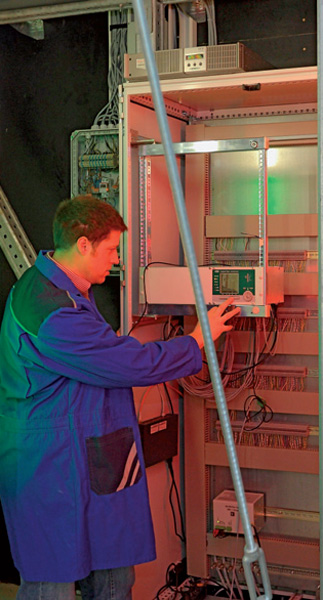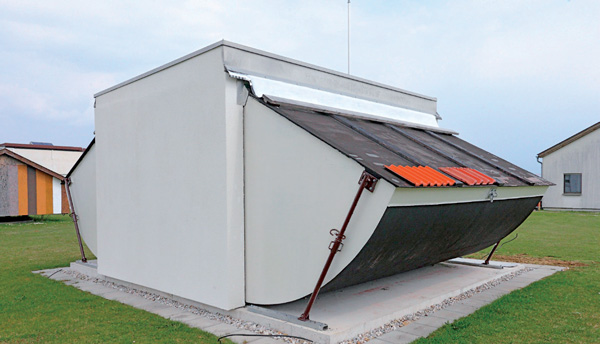Innovative facility for testing pitched and flat roofs
The outdoor testing site belonging to the Fraunhofer Institute for Building Physics IBP in Holzkirchen, Germany, has a new, flexible roof testing facility designed specifically for pitched roofs. Adjustments to the roof incline can be made in gradual steps and a range of roof setups can be installed next to each other and then turned to face north or south as required. This makes it possible to directly compare different types of roof construction under identical conditions. The test facility's short setup times for exchanging components are a key advantage, as it is no longer necessary to construct completely new roof structures or an entire building for testing. This cuts lead times considerably and results in significant cost savings.
Each of the four self-contained experimental chambers situated underneath the roof test surfaces can be individually humidified or heated as well as ventilated in different ways. To alter the level of humidity inside the chambers, ultrasonic humidifiers are used because these require little energy and therefore contribute only small amounts of heat to the room. Individual humidity profiles can also be compiled for each chamber and adjusted to create various typical use scenarios.
Special care was taken to ensure that the perimeter walls are adiabatic: controllable surface heating has been installed in the curved area of the experimental chamber and all exterior surfaces are extremely well insulated. These methods ensure a largely homogeneous temperature distribution inside the chambers. The radiant heating system controls the basic temperature while air heating compensates for short-term temperature fluctuations. The ventilation system can be operated with either recirculated or fresh air, and can be programmed to exchange the air up to five times per hour. Air is distributed throughout the interior via piccolo ducts, which guarantee a particularly uniform inflow of air across the entire width of the experimental chamber. These ducts were chosen on account of findings and test results gained at Fraunhofer IBP's Flight Test Facility. The components of the test roofs permit researchers to investigate heat flow, air permeability, hygrothermal behavior and surface temperature. A multitude of measuring instruments are available for recording heat flow, temperature and moisture in components or in the chamber, as well as for measuring outdoor conditions. A data acquisition system stores the recorded information in a database where it can be retrieved for the purpose of evaluations and analysis. Data can be visualized online in realtime and can also be accessed externally by customers on request.
The described setup provides a unique opportunity for examining the hygrothermal behavior of roof surfaces with a variable pitch. For the first time, angle-dependent effects can now be analyzed without having to modify the construction. This is of particular interest when investigating issues such as how insulation settles as a result of defects or how thermally-induced convection in roof cavities affects energy consumption. The test facility has been made possible thanks to the support of the German Federal Ministry of Economics (BMWI) and Project Management Jülich (PTJ).

